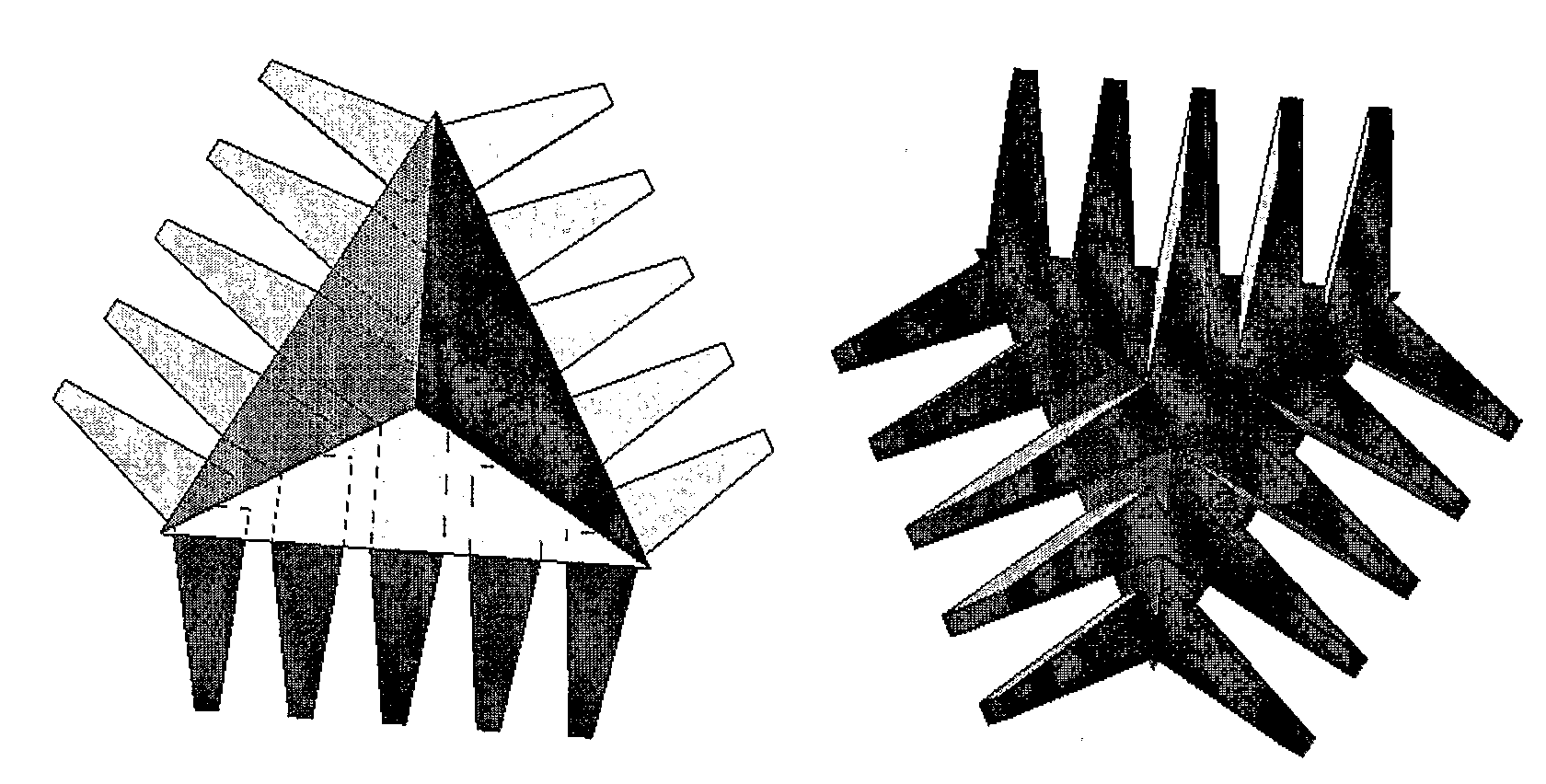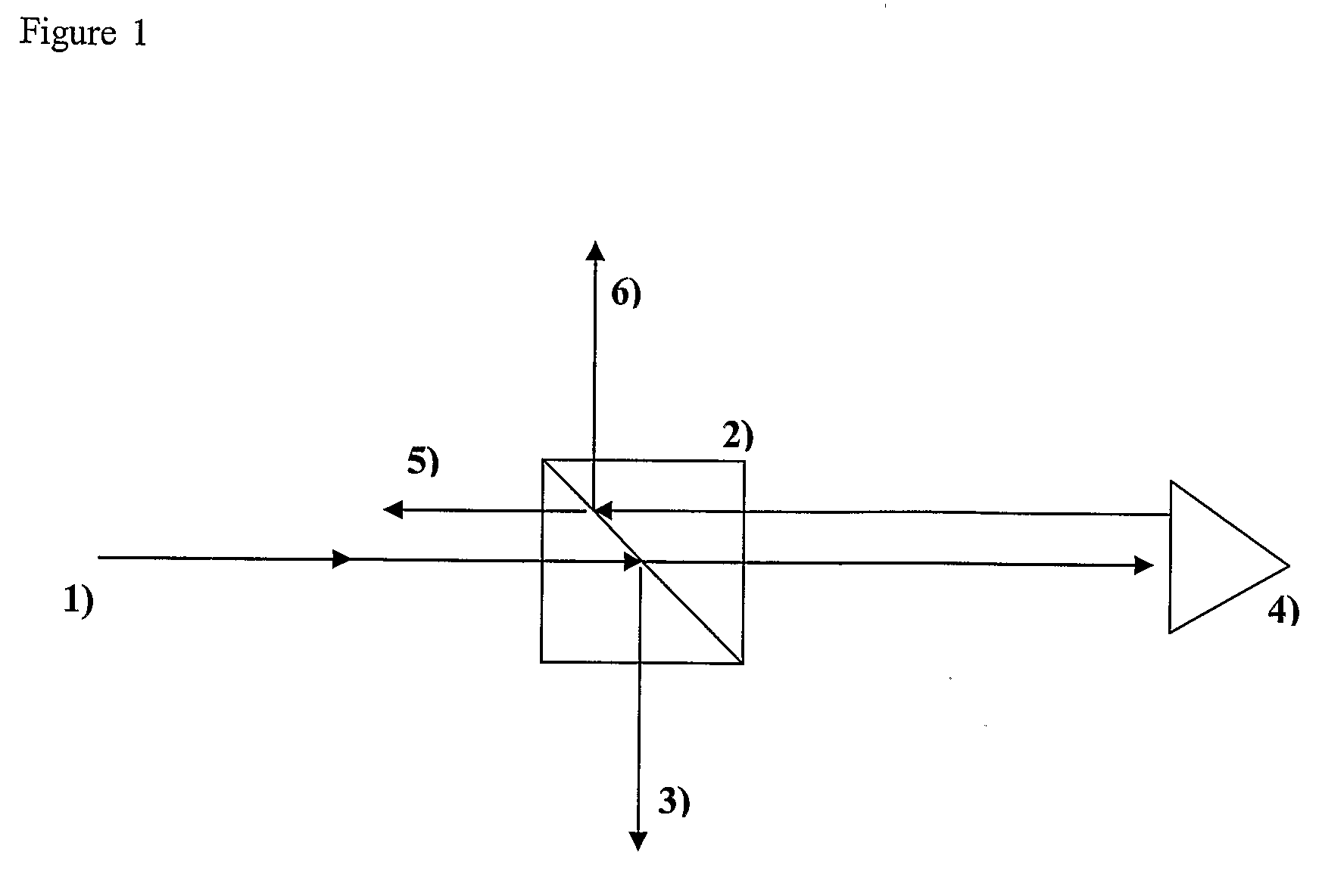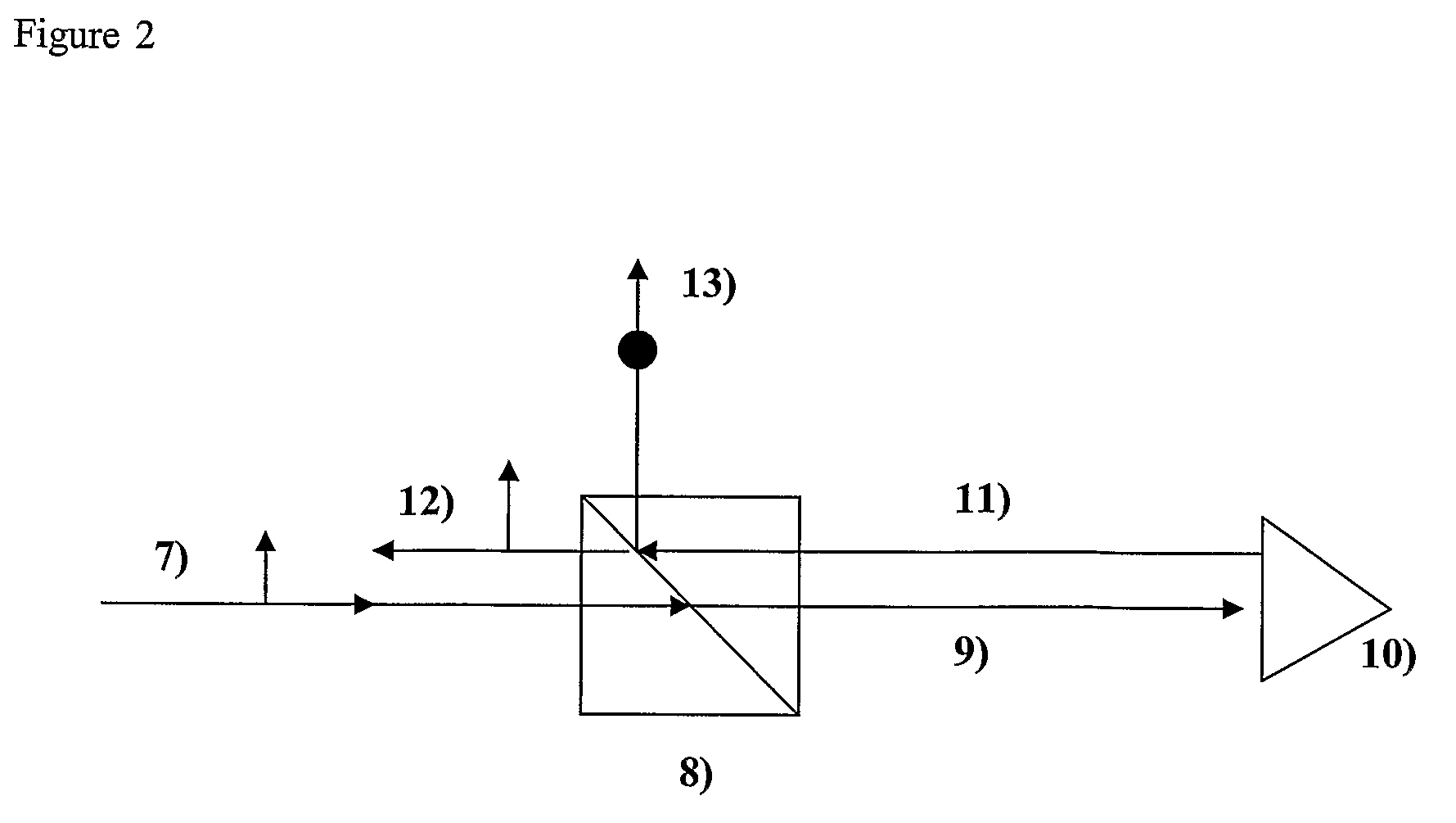Polarization coupling cube-corner retro-reflectors
a cube-corner and retro-reflector technology, applied in the field of polarization state-altering cube corners, can solve the problems of adding cost and complexity to the system
- Summary
- Abstract
- Description
- Claims
- Application Information
AI Technical Summary
Benefits of technology
Problems solved by technology
Method used
Image
Examples
Embodiment Construction
[0027]A cube corner consists of 3 mutually perpendicular reflecting planes in a pyramidal configuration. The point at which all three planes intersect is known as the apex of the cube-corner. In retro-reflecting, any incident ray strikes each of the surfaces once. As there are 3 planes, the order in which the planes are struck has 3 factorial combinations: 123, 132, 213, 231, 312, and, 321. These 6 combinations correspond to six distinct hexads (sub-apertures or non-contiguous wavefronts) on the front surface of the Cube Corner. Calculation of the polarization properties of the cube-corner requires calculation of the polarization properties of each of the six hexads. For each hexad, the calculation of the Mueller matrix is a product of four rotation matrices and three surface reflection matrices (J. Liu and R. M. A. Azzam, “Polarization properties of corner-cube retroreflectors: theory and experiment,” Appl. Opt. 36, 1553-1559 (1997), S. E. Segre and V. Zanza, “Mueller calculus of p...
PUM
 Login to View More
Login to View More Abstract
Description
Claims
Application Information
 Login to View More
Login to View More - R&D
- Intellectual Property
- Life Sciences
- Materials
- Tech Scout
- Unparalleled Data Quality
- Higher Quality Content
- 60% Fewer Hallucinations
Browse by: Latest US Patents, China's latest patents, Technical Efficacy Thesaurus, Application Domain, Technology Topic, Popular Technical Reports.
© 2025 PatSnap. All rights reserved.Legal|Privacy policy|Modern Slavery Act Transparency Statement|Sitemap|About US| Contact US: help@patsnap.com



